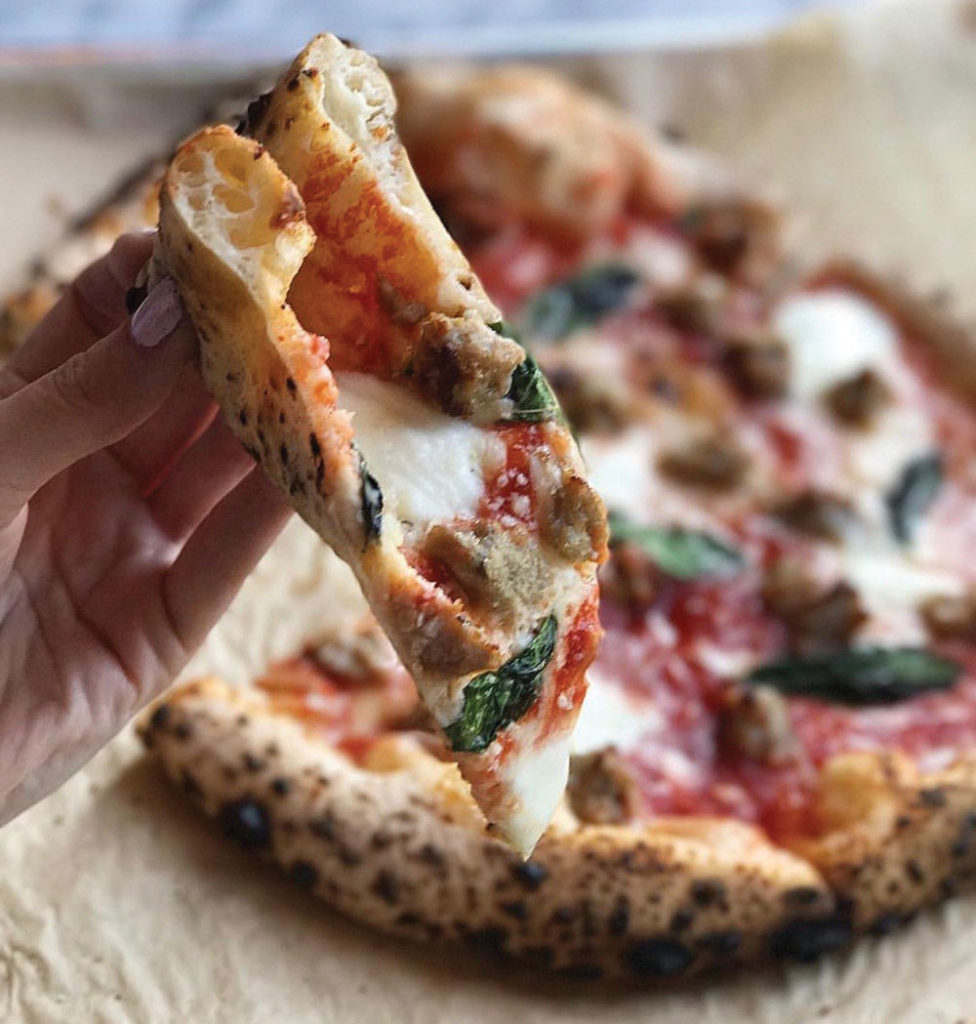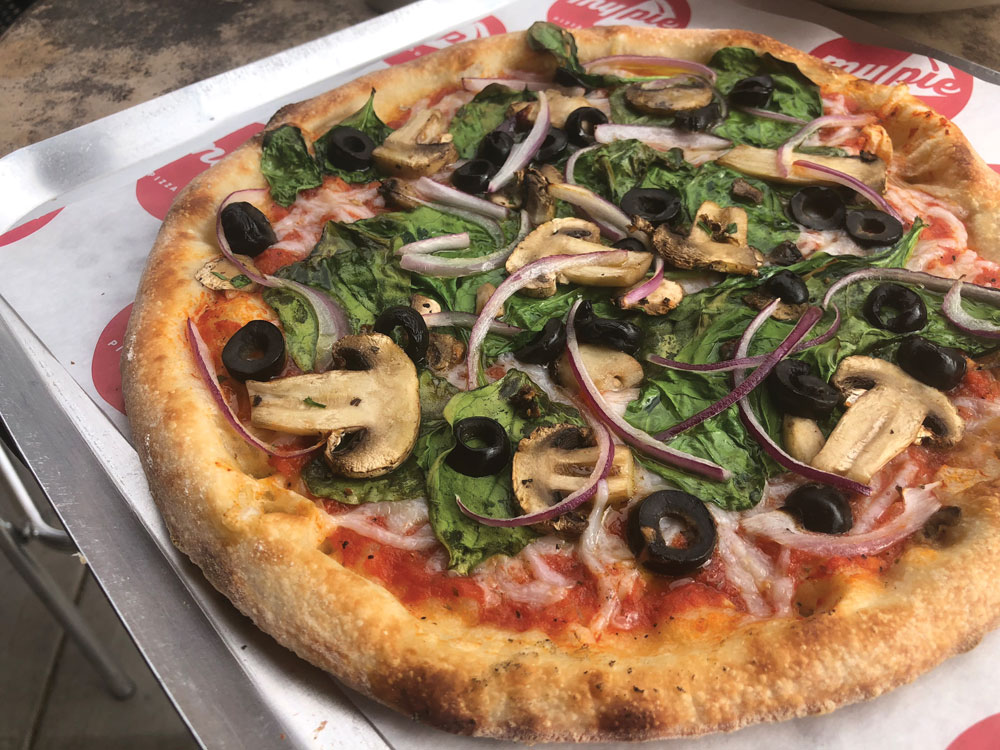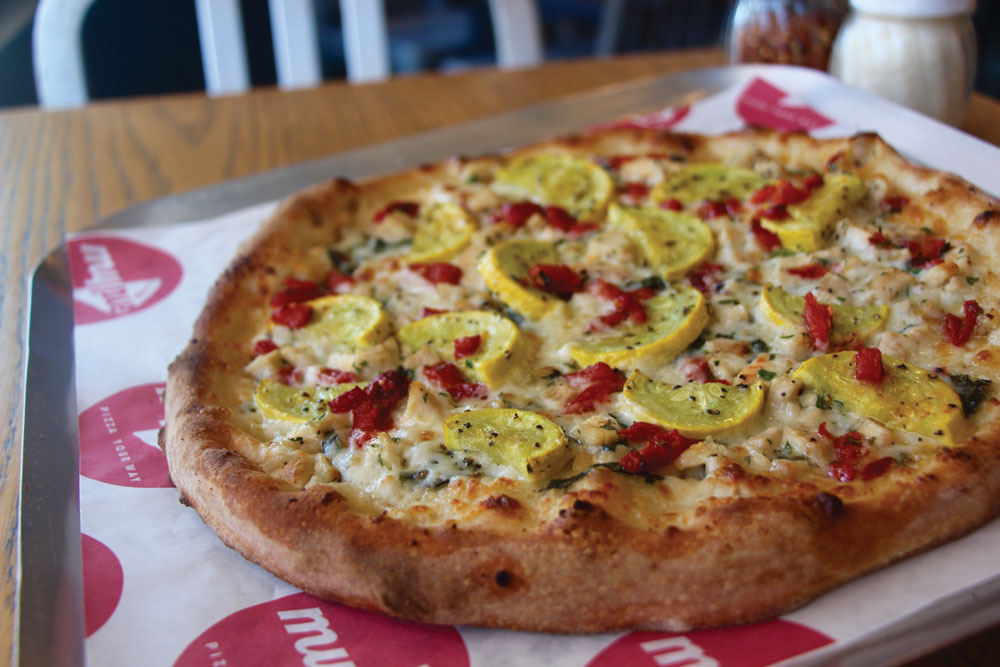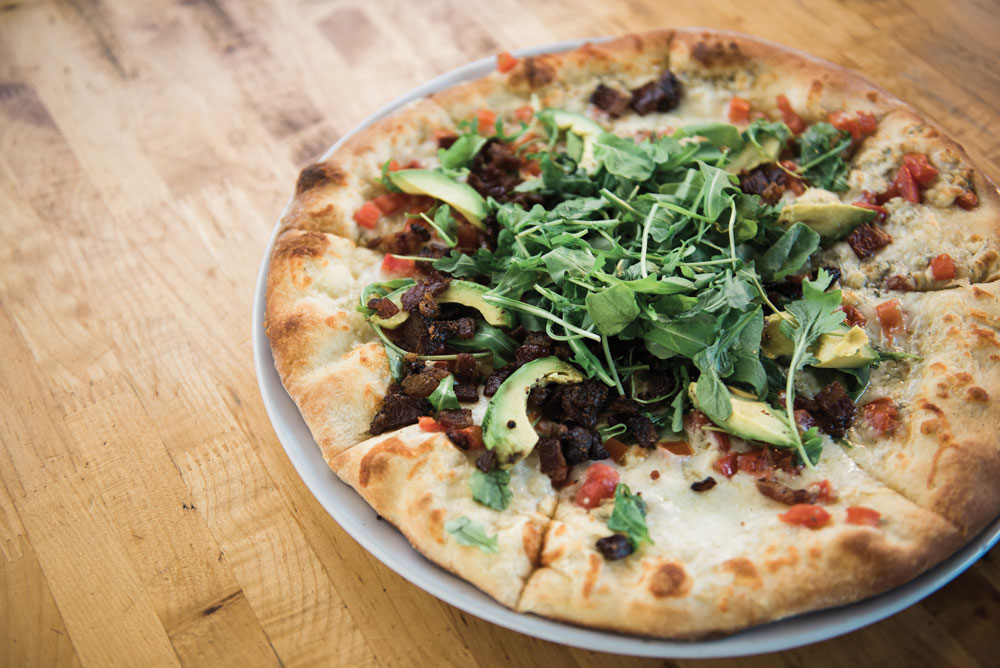Who doesn’t love the comfort food factor that cheese brings to any dish? And what chef doesn’t love experimenting with its endless varieties—stinky or smoky, mild or pungent, full-fat or vegan? While mozzarella will likely always remain head cheese at U.S. pizzerias, there are plenty of other options lighting up menus around the country. Here’s our look at the key cheese trends that have been gaining in popularity—and what experts predict will make the biggest mark in 2019.
Basics and Beyond
The California Milk Advisory Board (CMAB), based in Tracy, California, recently examined cheese trends in the fast-casual market and noted a definite growth in use of specialty cheese. But, not surprisingly, mozzarella still tops the lists of most-menued and most-preferred cheeses at fast-casual pizza joints, followed by Parmesan. Cheddar and provolone also rank in the top five.
Still, customers are increasingly apt to expand their dairy horizons. “While mozzarella remains by far the most prevalent type of cheese found on pizza, we are seeing more interest—particularly from millennials—in additional cheese toppings, including fresh mozzarella, Asiago and Parmesan,” says Amy Popp, director of brand marketing for Grande Cheese Company in Fond du Lac, Wisconsin. “Fresh mozzarella is likely growing due to the increasing popularity of margherita pizza, which has grown on menus by 21% over the past four years, according to Datassentials.”
Of course, you can always explore twists on the classics: Mathew Green, director of culinary operations for Blue Orbit Restaurant Consulting in Atlanta, suggests using fresh mozzarella curd instead of pulled mozzarella for a softer texture without the chewiness of fresh mozzarella. And Grant Arons, owner and founder of Inizio Pizza Napoletana in Charlotte, North Carolina, uses Italian buffalo mozzarella on every pizza. “It’s a distinct difference—and a really delicious one,” Arons says. “We find most new customers have little to no experience with buffalo mozzarella, and they’re constantly impressed with the flavor and mouthfeel. Patrons also learn about a product that makes the Campania region of Italy famous, so through this one ingredient, we’re also able to educate and broaden people’s perspective of Italian culture.”
Another specialty pizza at Inizio, the Limone Capra, provides a delicious spinoff on the classic mozz-ricotta pairing, featuring buffalo mozzarella and goat cheese ricotta. “The milkfat from the melted buffalo mozzarella and citrus from the lemon blend make a wonderfully light sauce,” Arons says. “And the soft texture and mild flavor of the goat cheese ricotta paired with fig jam complement the citrus perfectly.”
 |
|
Inizio Pizza replaces traditional mozzarella with buffalo mozzarella on all of its Neapolitan-style pies. |
Flavor Notes
At San Diego’s The Haven Pizzeria, owners Lauren Passero Brooks and Kate Grimes believe that offering a variety of different cheese types is imperative. “More and more diners are requesting higher-end cheeses; we have cheddar, ricotta, smoked Gouda and feta, among seven other options.” The owners also use an assortment of cheeses in their basic and specialty pies: The 4 Cheese sports Fontina, mozzarella, cheddar and Parmesan, while The Righteous Pig is topped with mozzarella and goat cheese to complement the flavors of pesto, prosciutto, caramelized onions, arugula and a balsamic drizzle.
Indeed, executive chef Josh Jacobsen at Peel Handcrafted Pizza in Frederick, Colorado, believes that goat cheese is underutilized in the pizza industry. “Because cheese is one of the most expensive items in the pizzeria, having a cheese that can go a long way—adding rich texture and giving incredible depth—can make a world of difference,” Jacobsen says. “Not everyone enjoys blue cheese or an intense aged cheese, but there are so many applications for goat cheese, and many options exist: firm, aged, in oil, fresh and more.”
Nora Weiser, executive director of the American Cheese Society in Denver, agrees that as consumer interest in specialty cheeses continues to grow, more pizzerias are using them—think burrata, Asiago, ricotta, goat cheese, blue cheese and buffalo mozzarella. Meanwhile, ethnic options are also on the rise: The CMAB has noted major growth in the use of Hispanic-style cheeses across all foodservice categories, including pizza. For example, the organization reports, menu mentions of Oaxaca cheese increased 2% from 2016 to 2017.
 |
|
My Pie’s Very Vegan pizza caters to the millennial crowd with vegan cheese and a whole-wheat crust. |
Operators’ quest for alternative melting cheeses will also continue in 2019, predicts Kerry Olson, VP of foodservice sales for Emmi Roth in Fitchburg, Wisconsin. “Raclette, known for its mild flavor and excellent melting capability, is a unique option for operators; it’s incredibly aromatic, visually appealing and a great way for operators with an open kitchen to excite and draw in customers,” she explains. “Other great alternative melting options include Gruyère, a smooth-melting cheese with a savory flavor that stands up to just about any topping, and mild and buttery original or flavored Gouda.” Olson adds that once-snubbed full-fat products like whole milk and real butter are coming back—and for optimal cheesy indulgence, a creamy, melty Havarti or rich and buttery Butterkäse fits the bill.
Alternatively, Green predicts that customers’ cravings for flavor-packed options will usher in more smoked mozzarella and provolone added to blends, a rise in blue cheese, and more goat and sheep milk cheeses on the menu. And Olson agrees that bold, smoky and flavored cheeses are hot: According to IRI retail data, flavored cheeses continue to outpace the overall cheese category at a rate of 2% per year. “Smoked cheeses are, in fact, the third largest category of flavored cheeses and have grown every year since 2013,” Olson reports. “We see this trend impacting foodservice as pizza operators look to excite palates by using flavored cheese like Sriracha Gouda or Chipotle Havarti.”
On the other side of the flavor spectrum, Weiser notes that using cheese in a sweet, rather than savory, format continues to gain popularity. She recommends options that pair salty and sweet, like figs, prosciutto, blue cheese and honey; or, for dessert pizzas, ricotta with caramel and chocolate, or goat cheese with honey, lavender and berries.
 |
|
Utilizing seasonal and unique topping ingredients, like squash on the Golden Harvest Pizza at My Pie, challenges operators to find the perfect cheese complement. |
Seasonal, Local and Natural
For 2018, My Pie Pizzeria, a “fresh-casual pizza concept” based in Scottsdale, Arizona, saw an increase in interest in unusual pizza toppings—think mac and cheese, squash, pears and apples. “Going into 2019, our R&D and seasonal pizza testing will focus on capitalizing on these unique toppings—including what cheese blends highlight and support them,” says owner Ryan Mitchell.
Weiser agrees that operators should build guests’ interest with rotating pizza specials that feature higher-end ingredients with a seasonal flair—with appropriate cheese pairings. “This can be a great upsell, even for restaurants that may not have the audience to support a full menu of less traditional items,” she says. “Seasonal flavors—think squash in the fall, caprese in the summer—can also tie in to what is available locally throughout the year, bringing two trends together on one pie crust.”
Grant is finding inspiration in artisan and locally crafted cheese, tapping artisan cheese makers to capture and highlight distinct regional flavors. “Similar to what craft beer did to local beer scenes, artisan cheese is contributing to the local food scene,” he explains. “At our new restaurant, Eight & Sand Kitchen, we’ll be topping Roman-style pizzas with local cheeses from makers that use ingredients straight from Italy, or fresh milk from the goats they’ve raised.”
Similarly, Weiser adds that there has been a shift away from commodity and processed cheese, even on pizza, as millennials are looking for more natural, wholesome products. She points to a report this year that U.S. processed cheese (such as classic American slices) have experienced four straight years of decline. On the other hand, cheeses made locally “give consumers a taste of place,” Weiser says. “While smaller pizzerias often incorporate this trend into their menu items as a competitive differentiator, larger chains can focus on local products too, even if on a more regional level—bringing uniqueness to their different locations around the country.” And, Olson adds, millennials are willing to pay more for specialty foods that contain simple ingredients and are sustainably sourced.
Tying into the demand for healthier options, operators who cater to a millennial audience have noted a rise in vegan cheeses—and manufacturers of these animal-friendly alternatives are constantly creating a greater range of varieties within that category. “Consumers are looking for cheese varieties that cater more specifically to their dietary needs or personal preferences,” Mitchell explains. “The popularity of our vegan pie leads us to believe that we will continue to receive requests for vegan, lactose-free, casein-free, soy-free and dairy-free cheeses going into 2019.”
Indeed, San Diego-based Woodstock’s Pizza recently conducted an Instagram poll among college students, who overwhelmingly responded with a desire for vegan slices in addition to whole vegan pies. Director of Marketing Jade Waterman sees this trend growing with millennials in particular, a demographic looking for healthier alternatives. “Seeing this trend and predicting significant growth in 2019, we’ve added vegan cheese slices in one location and whole vegan cheese pies at all locations to accommodate these special diets, along with low-fat and gluten-free pizzas,” Waterman says. “One piece of advice: If you’re going to add vegan cheese to the menu, ensure that you fully commit with a vegan crust option, too!”
Tracy Morin is PMQ’s senior copy editor.















